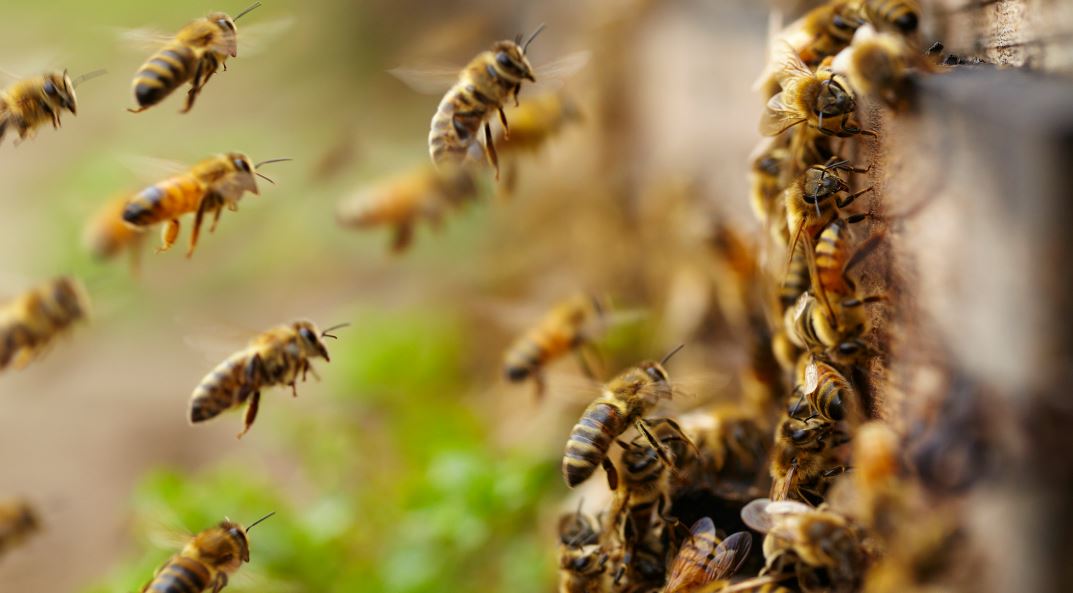Why rooftop beehives are bad for native bees
Research suggests that introducing invasive bees creates more stress for native pollinators.
Managed honeybees, in addition to being more numerous than their indigenous counterparts, are better at finding and collecting pollen, according to EEB PhD candidate, Charlotte De Keyzer.
“They have bees that go out and scout and look for resources, come back to the hive, have amazing communication skills, and can bring foragers back to that spot — whereas solitary bees are working alone in isolation,” says De Keyzer, who studies bees in urban environments.
More than 90 per cent of bee species in Ontario are solitary — meaning they don’t live in hives, De Keyzer says.
“There’s just massive confusion among the public,” says Sheila Colla, former EEB Postdoctoral Fellow and Assistant Professor of environmental studies at York University. “Most people growing up think bees make honey, they’re yellow and black, they sting, they live in hives — but the vast majority of [Ontario] bees don’t live in hives, are not black and yellow, do not sting, and do not make honey.”
Sheila Colla and Assistant Professor Scott McIvor recently co-authored a paper warning of the negative effects managed honeybees can have on biodiversity and urging caution in the expansion of urban beekeeping.

